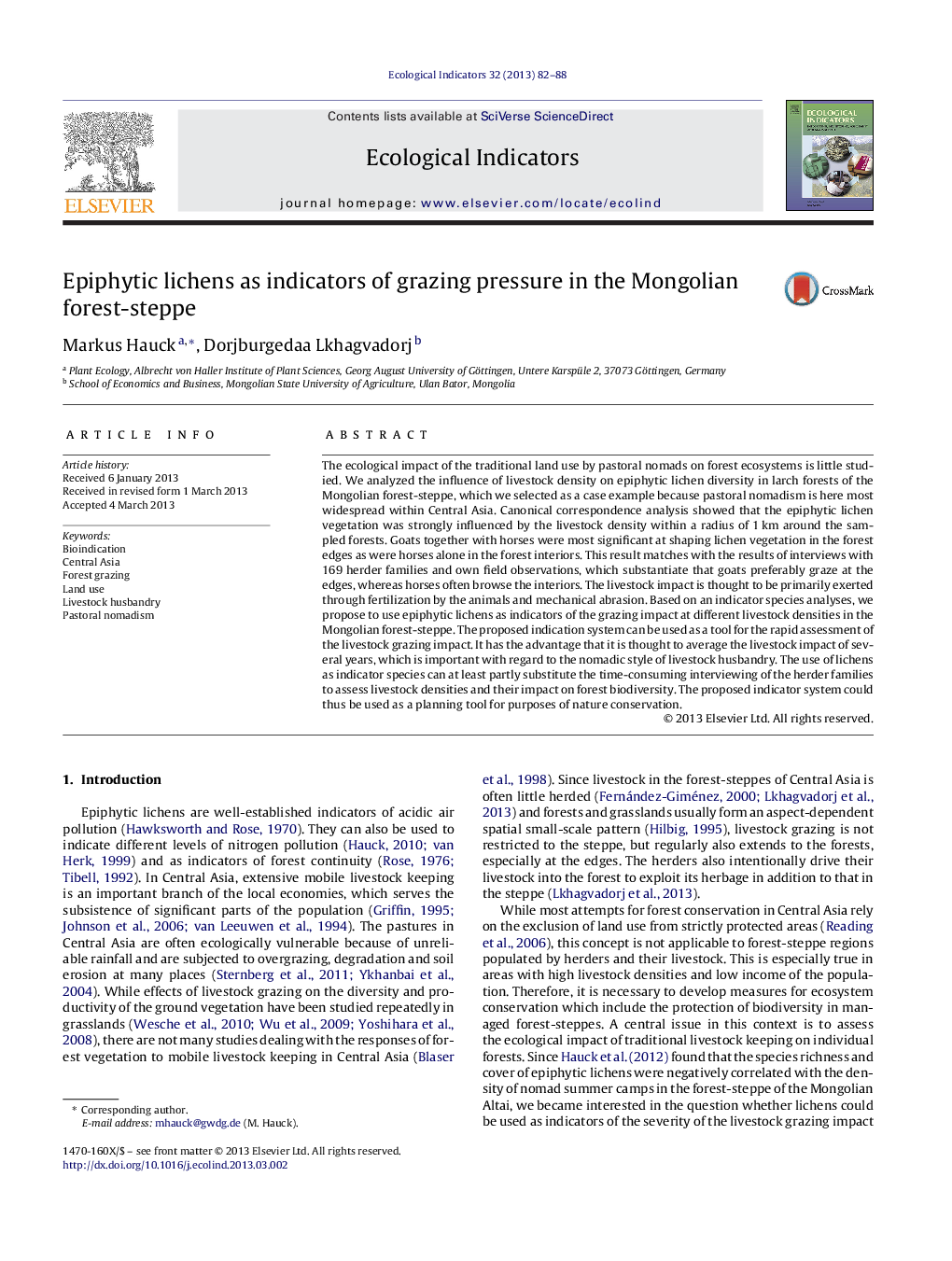| Article ID | Journal | Published Year | Pages | File Type |
|---|---|---|---|---|
| 4373389 | Ecological Indicators | 2013 | 7 Pages |
The ecological impact of the traditional land use by pastoral nomads on forest ecosystems is little studied. We analyzed the influence of livestock density on epiphytic lichen diversity in larch forests of the Mongolian forest-steppe, which we selected as a case example because pastoral nomadism is here most widespread within Central Asia. Canonical correspondence analysis showed that the epiphytic lichen vegetation was strongly influenced by the livestock density within a radius of 1 km around the sampled forests. Goats together with horses were most significant at shaping lichen vegetation in the forest edges as were horses alone in the forest interiors. This result matches with the results of interviews with 169 herder families and own field observations, which substantiate that goats preferably graze at the edges, whereas horses often browse the interiors. The livestock impact is thought to be primarily exerted through fertilization by the animals and mechanical abrasion. Based on an indicator species analyses, we propose to use epiphytic lichens as indicators of the grazing impact at different livestock densities in the Mongolian forest-steppe. The proposed indication system can be used as a tool for the rapid assessment of the livestock grazing impact. It has the advantage that it is thought to average the livestock impact of several years, which is important with regard to the nomadic style of livestock husbandry. The use of lichens as indicator species can at least partly substitute the time-consuming interviewing of the herder families to assess livestock densities and their impact on forest biodiversity. The proposed indicator system could thus be used as a planning tool for purposes of nature conservation.
